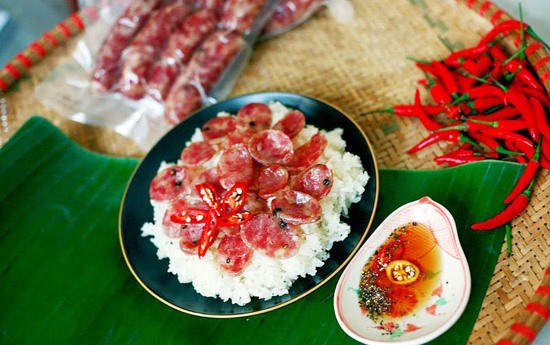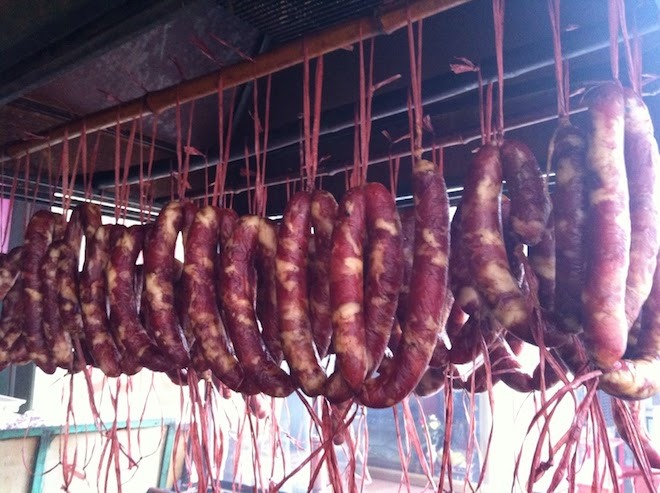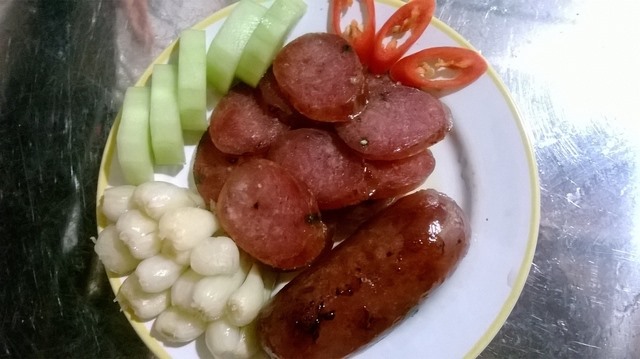 Life & Style
Life & Style

Lạp xưởng is a popular dish made across Việt Nam, but the best comes from Bắc Kạn Province's Tày ethnic group.
 |
| Dig in: Lạp xưởng made by Bắc Kạn Province’s Tày ethic group eaten with sticky rice is very tasty. — Photos Đàm Phương |
By Thanh Hà
Lạp xưởng is a popular dish made across Việt Nam, but the best comes from Tày ethnic group in the northern mountain Bắc Kạn Province .
Tết is approaching and they are preparing to make lạp xưởng (a special handmade sausage) to welcome Việt Nam’s biggest traditional holiday, which falls on February 5.
Ahead of the festival, Tày women wear their traditional clothes to go to the market to buy food while men prepare to kill a pig for Tết.
Housewife Lâm Thị Noọng said her family chips in with two others to kill a 70kg pig raised by herself to make bánh chưng (rice cake) and the sausage.
“Sausage has been made by my ancestors for a long time. My mother says that in the past during difficult days, her family killed a pig for Tết and made the dish last until the next Tết,” Noọng said.
She said her mother’s dish has its own unique flavour, with the smoked pork lightly salted and combined with sour fermented maize wine.
“We all are interested in the dish for the mix between the crispiness of the pig’s small intestine and the sweetness of lean pork and fat,” she said, noting that her mother has carefully chosen ingredients to make the dish.
They include lean and fat pork which are cut into thin pieces and mixed with salt, mác mật (a kind of wild) leaves, maize wine and forest ginger sauce for two hours before stuffing it into half dried small intestines, which should not be stuffed too thick.
She then uses a needle to prick the small intestine to stop the lạp xưởng from cracking, before tying each sausage into a 20cm parcel.
The dish should be dried in the sun or left in kitchen until it is dry, said Noọng.
The food is often fried or roasted on wood charcoal to be eaten with sticky rice.
“All my family members are interested in enjoying the food dipped in chili sauce eaten with bánh chưng (rice cake) during Tết. My mother said it’s a speciality of our native village that every Bắc Kạn child living far and wide remember when Tết comes,” she said.
Hanoian Nguyễn Thị Hải and her friends often hire a four-seat car near Tết to go to Bắc Kạn to buy sausage, organic miến dong (canna vermicelli) and forest mushrooms for Tết.
Hải said for almost 10 years now, despite being busy, she spends two days a year to travel to Bắc Kạn to buy these things.
“With aromatic flavour, the sausage is one of main food at my home Tết, my children like to roast it over wood charcoal cookers. They say there is no food that can compare with this Bắc Kạn one,” Hải said, adding that the miến dong which is made of edible canna planted by farmers in Na Rì District, is fragrant and crispy.
Farmer Lùng Thị Mười in Bắc Kạn said her family’s living standards have improved since she started selling sausage and canna vermicelli.
“Apart from familiar customers, I also receive orders from buyers in Hà Nội and HCM City. My goods are sold very well. At this time, seven days before Tết, we still don’t have any goods for sale because all of our food have sold out. I’m very happy because we’ll have a consecutive good Tết this year,” Mười told Việt Nam News. — VNS
 |
| Mouthwatering: Smoked lạp xưởng made by Tày ethic people. |
 |
| Yummy: A tasty roasted plate of lạp xưởng is ready. |


.jpg)

